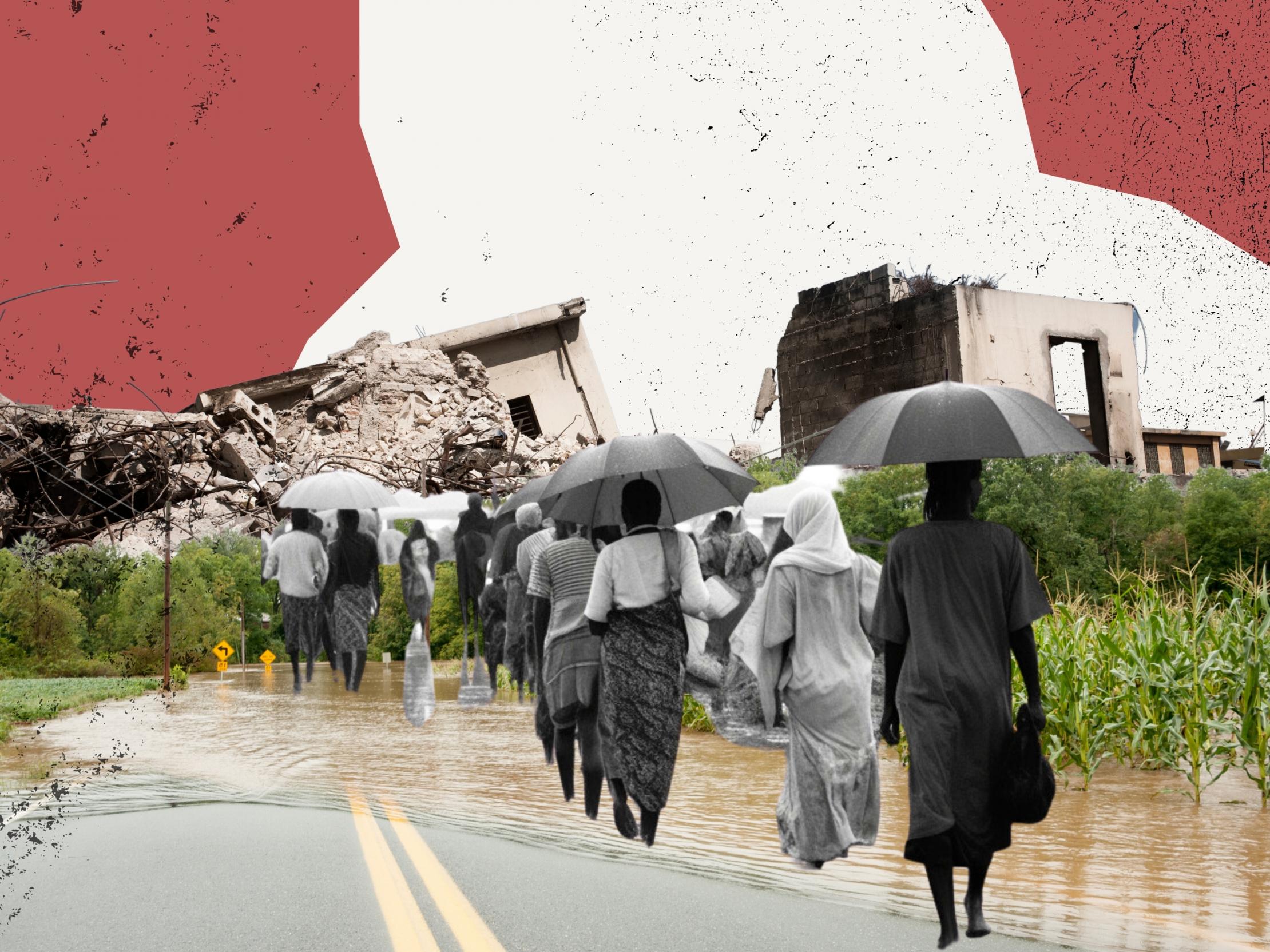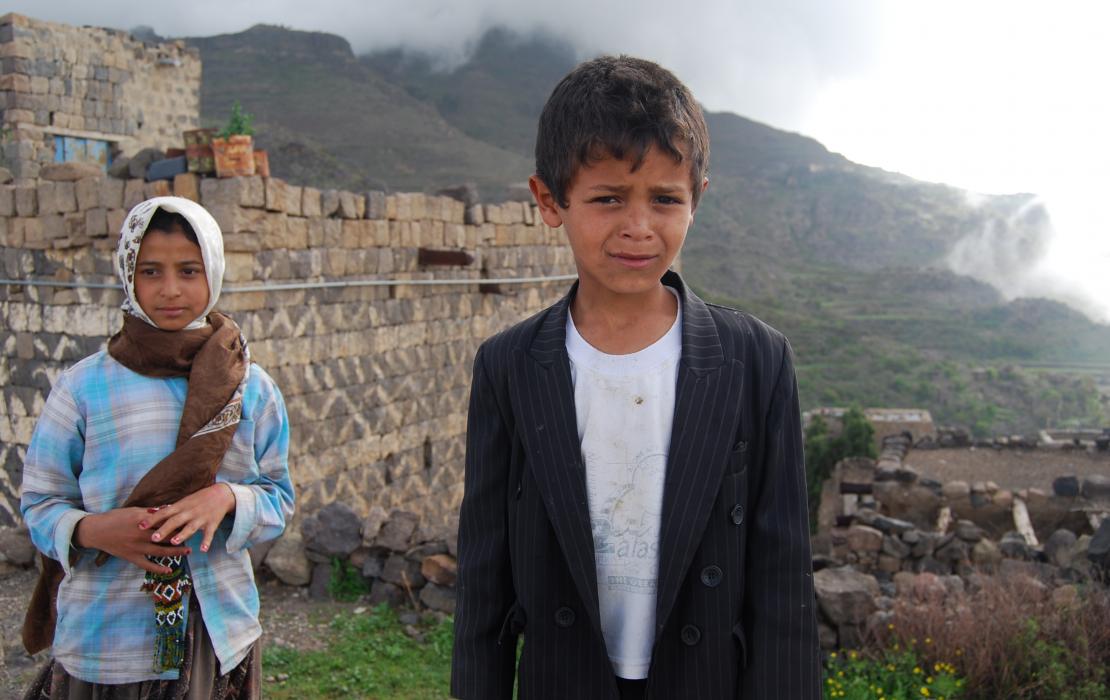
Summary
- Climate security refers to the impacts of the climate crisis on peace and security, particularly in fragile and conflict-affected settings.
- Climate change impacts can trigger competition over natural resources, insecure livelihoods, and mass displacement, increasing the risk of social tensions and instability.
- Investing in climate action can be an opportunity to strengthen cooperation, rebuild trust, and mend the social fabric in fragile and conflict-affected settings.
- UNDP supports countries in fragile settings align responses to climate change with conflict prevention and peacebuilding actions.
What is climate security?
Climate security refers to the impacts of the climate crisis on peace and security, particularly in fragile and conflict-affected settings.
Climate change can exacerbate food, water, and livelihood insecurity, with cascading effects such as increased competition over natural resources, social disruptions, and displacement. This can lead to increased tensions, conflict, and instability in a country or region.
In settings where conflict already exists, the impacts of climate change can aggravate or prolong it, making it more difficult to reach and sustain peace. Conflict can in turn disrupt or impede climate action, either through the active destruction of energy, water, and agricultural assets, or by delaying or blocking mitigation and adaptation interventions.
Why does climate security matter?
By 2030, climate change could push up to 130 million more people into poverty, not only exacerbating existing vulnerabilities, including food and water insecurity, but also socio-economic fragility, and political grievances. Within already fragile settings, these impacts can escalate security challenges and worsen instability. Furthermore, climate-related security risks often affect women at disproportionate levels.
Therefore, responses to climate change should align with conflict prevention and peacebuilding actions. Investing in climate action is critical in fragile and conflict-affected settings and, if seized upon with intentionality, can be a valuable opportunity to strengthen cooperation, rebuild trust, and mend the social fabric. The Sixth Assessment Report from the Intergovernmental Panel on Climate Change (IPCC) recognizes that climate solutions can offer new avenues to build peace in conflict-prone regions vulnerable to climate change.
While carbon footprints may be low in many fragile settings, decentralized renewable energy solutions can be a lifeline which makes all other support possible, including clean water, light, warmth, and sustenance, as well as basic and emergency services. Choosing renewables and clean technologies in reconstruction efforts also strengthens resilience and avoids costlier efforts to retrofit at a later stage.

Why are we hearing more about climate security now?
In 2022, the world experienced both one of the warmest years on record and the highest number of violent conflicts since the inception of the United Nations (UN). As temperature records continue to be broken and climate change impacts intensify, the risk of conflict and instability around the world is likely to increase. The threats posed to peace, security, and stability by the climate crisis reinforce the urgent need to drastically reduce greenhouse gas emissions and accelerate climate ambition as every fraction of a degree of warming matters, particularly for those most vulnerable.
According to the latest IPCC report, approximately 3.3 to 3.6 billion people already live in contexts that are highly vulnerable to climate change. But 70 percent of the most climate-vulnerable countries are also among the most fragile. As climate change impacts like rising temperatures, erratic rainfall, sea-level rise, and more severe and frequent extreme weather events continue to unfold, there is an increasing risk that these countries will experience further social tension and instability due to volatile food prices, increased competition over natural resources, insecure livelihoods, and mass displacement.
In recent years, many global and regional policy platforms have been paying increasing attention to the impacts of climate change on peace and security – including the UN Security Council, the African Union Commission (AUC), the European Union (EU), the Organization for Security and Co-operation in Europe (OSCE) and the North Atlantic Treaty Organization (NATO), among others. The COP27 Presidency launched a first-of-its-kind initiative called Climate Responses for Sustaining Peace (CRSP), together with AUC and UNDP, to ensure that integrated climate responses contribute to sustainable peace and development in line with national ownership and context specificity.

Photo: Ab Rashid/UNDP Bangladesh

Photo: UNDP Yemen
What are some of the most common climate-induced risks to peace and security?
Competition over limited resources. Climate change has worsened access to natural resources, with some communities experiencing higher volatility in the availability and distribution of the very resources on which their livelihoods and coping strategies depend. This often results in greater competition over limited resources and increased social tensions and disputes.
Globally, food insecurity has reached record levels due to conflicts, the COVID-19 pandemic, and worsening extreme weather events. In 2022, nearly 260 million people in 58 countries faced acute food insecurity, and 35 million people faced starvation.
In countries affected by conflict and fragility, the impact is amplified, as people are already in humanitarian need with limited capacity to sustain more hardship. Across the Horn of Africa, in 2022, 20.9 million people were left highly food insecure due to the longest and most severe drought in recent history. In Kenya and Somalia alone, almost 3 million people faced food insecurity at emergency levels.
Mass displacement. By 2050, climate change could force 216 million people in six world regions to move within their own countries. Water scarcity, low crop productivity, and rising sea levels will shape the trajectory of climate relocation for the next half-century, hastening forced displacement, while exacerbating existing tensions or creating new ones.
Insecurity and polarization. Globally, 6 out of 7 people feel insecure, and that can be explained in part by the effects of climate change. Climate change can worsen inequalities, disproportionately affecting vulnerable communities and exacerbating social grievances. Disruptions to livelihoods, disputes over resources, and displacement can intensify existing tensions and trigger instability.
Moreover, insecurity is associated with political polarization and extremism. For 11 out of the last 14 years, political instability, violent extremism, strained neighbor relations, and displacement within and across borders have been aggravated, according to the Global Peace Index (2022).

Photo: Colombia Indómita/UNDP Colombia

Photo: UNDP Mali
What are the challenges that make addressing climate security issues difficult?
Addressing climate-induced risks to peace and security requires holistic and integrated approaches. This relies on collaboration between the climate and environmental fields and know-how, on the one hand, and the peace and security ones, on the other. Coordinating such efforts can be challenging, as they are distinct fields of policy and practice. To make things more challenging, there is also no one-size-fits-all solution because climate impacts on peace and security in West Africa might differ greatly from those in Southeast Asia or the Pacific Islands. Moreover, a short-term focus on emergency response alone can mean that longer-term investments in adaptation and peacebuilding are crowded out.
Moreover, the financial resources needed for this work remain disconnected and insufficient to meet the needs. For example, countries in fragile settings often suffer some of the worst climate impacts, but despite this, are amongst the lowest recipients of climate finance. A study by UNDP shows that, between 2014 and 2021, extremely fragile states received only US$2.1 per person in multilateral climate finance compared to $161.7 per person for non-fragile states.
What are some solutions to overcoming these challenges?
Climate action, policies, and finance should incorporate peace and security considerations, especially in conflict-affected and fragile settings. By conducting climate security risk assessments and identifying the climate change impacts increasing the risk of instability and conflict, governments can plan more effectively for climate adaptation and mitigation efforts which contribute positively to peace.
Climate financing mechanisms should not shy away from investing in countries and territories affected by conflict. Instead, they should incentivize investments in adaptation and mitigation efforts that deliver co-benefits for peace and stability in fragile settings. Experience shows that initiatives focused on adaptation, access to energy, or climate-resilient livelihoods, if executed with special care, can contribute to reducing tensions and foster long-term resilience.
Women and youth are on the frontlines at the confluence of violent conflict and the climate crisis and play an important role, especially in their communities, in both climate action and peacebuilding. Addressing gender inequalities and empowering women and youth must be a crucial component of climate action in fragile and conflict-affected settings.

Photo: UNDP Somalia
How does UNDP work on climate, peace, and security around the world?
UNDP's work on climate, peace, and security around the world revolves around supporting at-risk communities to seize opportunities for lasting, positive change. With expertise on climate change, conflict prevention and peacebuilding, governance, finance, among other areas, UNDP brings together people and resources to foster resilient communities and advance sustainable development.
A UNDP study with contributions from UNFCCC that examined all first-round Nationally Determined Contributions (NDCs) found that conflict and insecurity are obstacles to climate action but that progress towards peace alone is not necessarily conducive to climate action. UNDP is leveraging its capacities as the largest implementer of climate action in the UN System to “climate-proof” conflict prevention and peacebuilding initiatives and deliver peace-positive mitigation and adaptation.
In the Lake Chad Basin, UNDP is supporting actors to address the impact of climate change on water resources, which has exacerbated tensions between communities which have also been affected by Boko Haram insurgency. By promoting stabilization, cross-border cooperation and climate-resilient livelihoods, UNDP helps to mitigate potential triggers for tensions and instability.
In Sudan, UNDP is helping to strengthen local conflict resolution mechanisms and enhancing access to energy and climate-resilient livelihood options for women, youth, and marginalized groups affected by conflict and violent extremism, with the support of the UN Climate Security Mechanism.
In Yemen, UNDP’s support is focusing on rehabilitating water infrastructure and providing solar-powered water systems, which not only address climate challenges but also reduce tensions over scarce resources and contribute to building peace and stability.
In Mali, UNDP is helping address the interlinked challenges of land degradation and climate change by supporting the introduction of nature-based solutions that reverse land degradation, strengthen the climate resilience of local communities, and promote conflict resolution.
***
Editor’s note: UNDP helps countries anticipate, prevent, respond to, and recover from crises, every day, and in every development context. UNDP’s Climate Promise, the largest offer of support to governments to enhance their NDCs under the Paris Agreement, supports more than 120 countries across the world. This includes support to 50 fragile and conflict-affected countries and territories.

